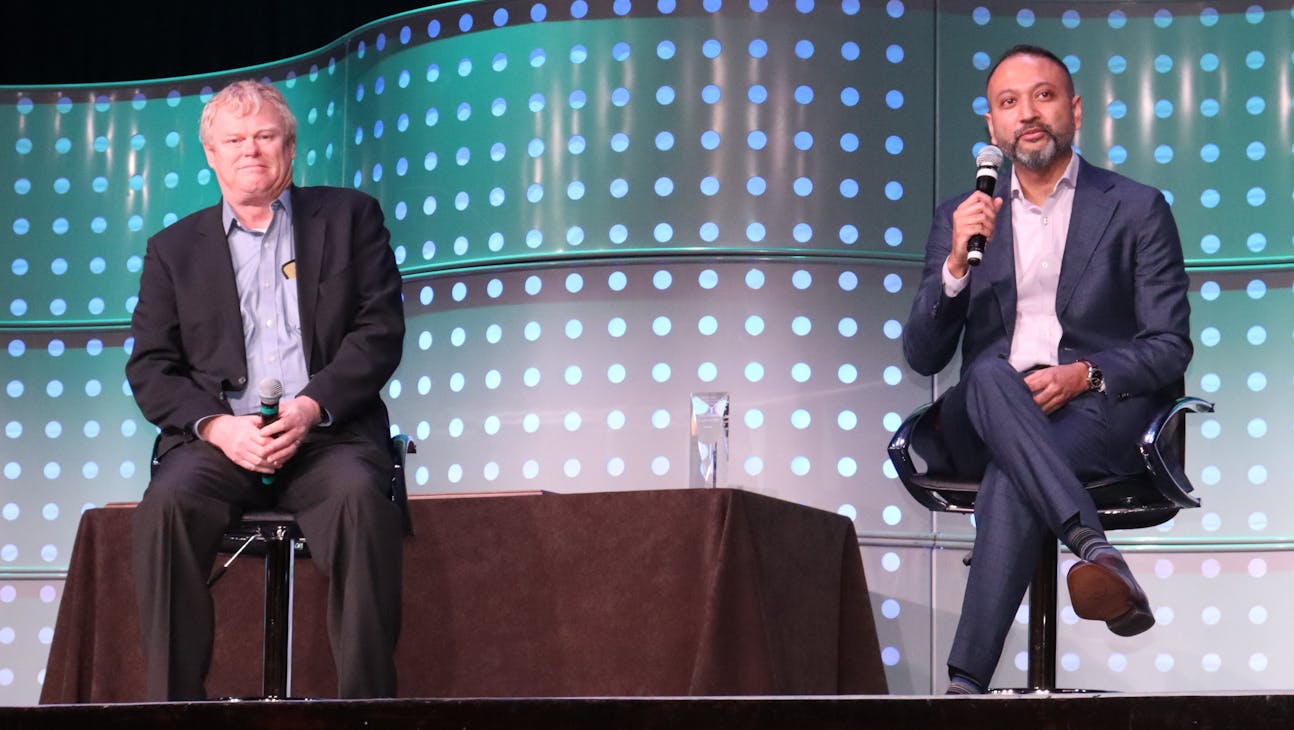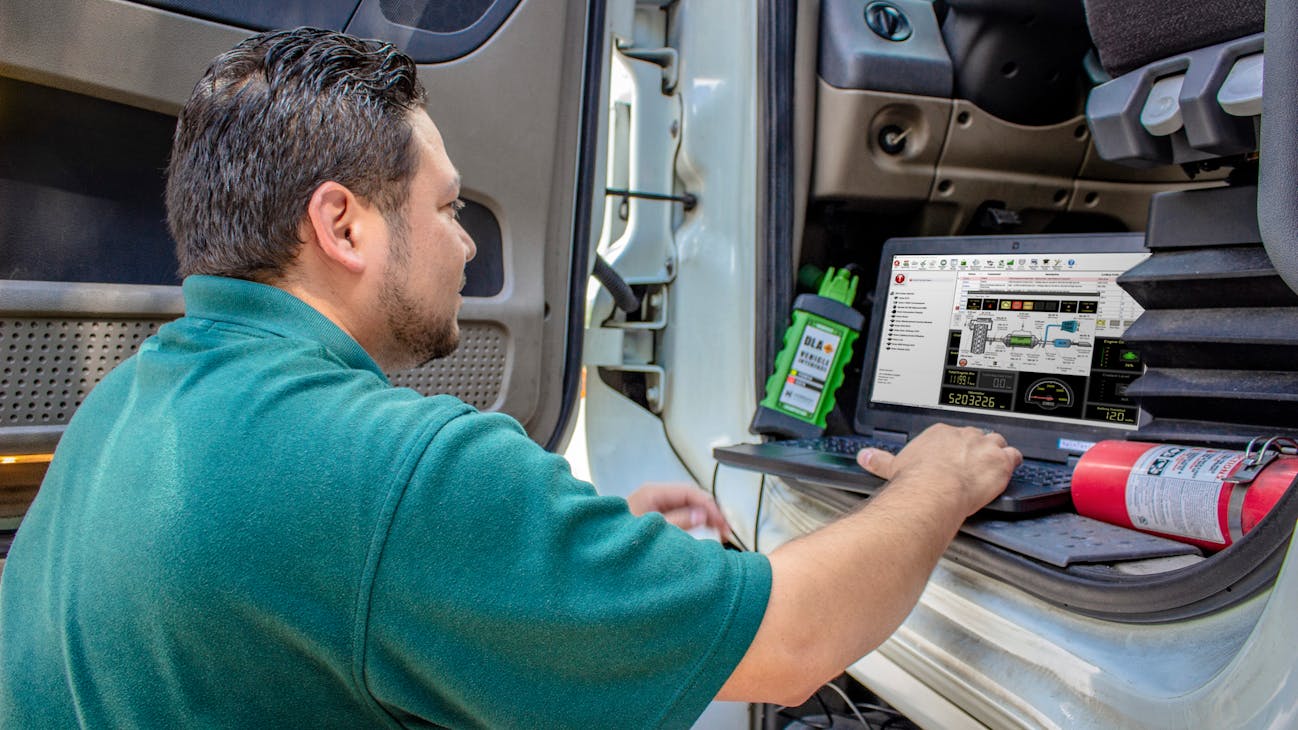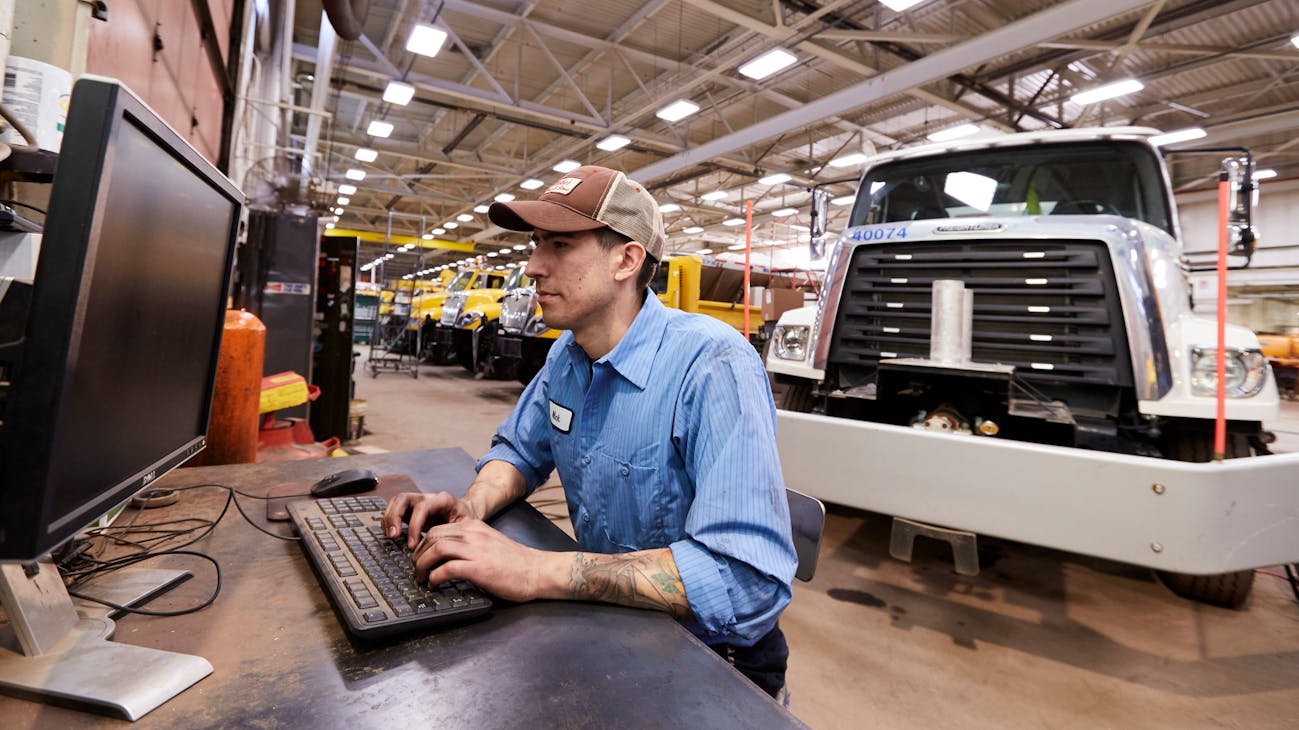Connecting the data generated from today’s vehicles with all parties of the commercial vehicle industry will lead to an ecosystem of predictive, and prescriptive, vehicle service.
During the panel discussion “Paving the Way: How the Heavy-Duty Aftermarket Can Profit from Telematics & Predictive Maintenance” at Heavy-Duty Aftermarket Week (HDAW) 2022, the importance of data shone through, especially in a time of rapid data expansion and integration for the commercial vehicle parts sector.
An absurd amount of data is being generated on today’s commercial vehicles, thanks to a growing number of sensors, and Ben Johnson, director of product management for Mitchell 1, and Sandeep Kar, chief strategy officer for Noregon, discussed how this data will lead the way to predictive maintenance, and ultimately a better connection between shops and the aftermarket—resulting in better uptime for fleets.
It starts with the data generated by sensors.
“Bumper to bumper in a truck, in a trailer, in off-highway equipment, a van, bus—any commercial vehicle you can think of—systems are getting ‘sensorized,’” Kar explained. “OEMs and Tier Ones are putting these sensors in these systems that are capturing massive amounts of data.”
Kar said the data bidirectionally transmitted by modern ‘sensorized’ commercial vehicles—between the fleets, OEMs, and telematics providers—can also be used to “predict certain outcomes.”
“We can now pinpoint what’s wrong with that vehicle,” Kar explained. “Technology exists today to guide that vehicle towards a service and maintenance location, [which] now knows this particular vehicle is coming in with this particular part requirement and service requirement. That reduces dwell time.”
Think of algorithms as the engine for this predictive strategy, and data the fuel.
And the CV repair space is on the verge of crossing over to this predictive maintenance phase.
Though, this influx of data advancement has implications for what Kar referred to as “a ticking time bomb.”
“Our industry talks a lot about driver shortage; we don’t talk enough about technician shortage,” Kar said. “And that’s a huge problem. These vehicles are getting more and more complicated, more and more ‘sensorized,’ and we don’t have enough skilled technicians.”
Kar reinforced this statement with reference to a statistic claiming that the average age of a technician in the industry is 46 years old, alluding to a sentiment that not enough new technicians are entering the industry.
Kar continued on the rise in ‘sensor-ization’ and its positive impacts, stating that today’s vehicles are transmitting data to the fleet, to telematics companies, to the OEMs, as well as establishing a bidirectional data transfer from infrastructure, from the OEMs, from fleets, and more.
Future of fault codes
Johnson posed a common scenario of a coast-to-coast vehicle developing a problem in the middle of the country. If that vehicle is transmitting data, to say a fleet management system, that data can be evaluated through services that recognize codes, the general causes of such codes, the severity of codes, vehicle operational safety based on present codes, and more.
“We know enough about the code that we can direct [that vehicle] to a known shop,” Johnson explained. “We know the parts that are most likely going to be needed, [and can] get those parts on their way to that shop, [and] make sure that that shop has the right technician, so that very quickly, the truck can show up, the part is there, the technician just changes that part, verifies it, that resolves the issue, and gets the driver on the way. But information is what makes that scenario possible.”
Without such data, Johnson said that a driver would have to arrive at the shop and wait for a scan tool to be plugged into the vehicle only to begin the service process from there. But with today’s available data, Johnson explained, “the process can start way upstream by using that information.”
This is the stage where the aftermarket has an advantage that they can capitalize on, Kar said, by providing the parts and services to reduce dwell time.
Connecting the data dots
How is it that the CV industry can reach this integrated service solution across parties? Connectivity.
Through the connection of databases and the use of application programming interfaces (APIs), fleets, OEs, telematics providers, the aftermarket, and others can converge on solution delivery.
“Once you have that connectivity, the entire ecosystem gets visibility into that particular problem,” Kar said. “Then a lot of new ways of engaging with warehouse distributors, or service and maintenance providers, IRFs, becomes possible because everybody can now start bidding for that business as we socialize or democratize that information. Yet, as an industry, it can’t be done by just companies like ours; we have to have the entire aftermarket joining into this.
“And the good thing is that because the systems are getting ‘sensor-ized’, data is getting generated, this is bound to happen,” Kar continued. “It’s just a matter of time. And so, we are ready for it. And we invite the industry to join us in this.”
Johnson explained Mitchell 1’s use of AI with their database to achieve their analytical insight for parts repair and replacement.
“We have a history with light vehicles that have over one billion repair orders that we analyze every day with our AI systems to create insights,” he said. “So, we can say, ‘For this vehicle with this trouble code with this many miles, it’s probably this thing that caused that.’ We can do that on the heavy-duty side, too. To be fair, we’ve only got about 5 million repair orders in that out of the billion, but it’s coming together. And so, people that really want to engage, want to make this stuff happen, can work with companies like ours, with Noregon’s, with others that have these types of types of technologies.”
Johnson continued, explaining that once this data integration is established, analysis can truly understand and in turn actuate preparation and execution for imminent repairs and failures, coordinating parts procurement and services.
“These technologies … it’s here. It’s not coming, it’s here,” Johnson stated. “It takes people to help understand what it is you’re trying to accomplish. And then we can set up the relationships to make that happen. APIs are ultimately the transmission methods that move the data around and deliver it in a way that makes your fleets operate better.”
“We talked about APIs and preventive maintenance, that both of our organizations develop and offer; the solutions are available, but the reliability [of] the solutions need to be proved,” Kar commented. “That will happen once you have sufficient critical mass of data that is available coming from these vehicles, because to train an AI model, the more data you have, the better the reliability and accuracy of those predictions. This is a movement that is happening in [the] early days. But as it starts gaining momentum, you will see that the market matures to a stage where the model has been proven. The connections have been made through APIs. Part visibility has increased. The part flow has increased. Dwell time has decreased. And then, it takes on a life of its own.”
Both Kar and Johnson agreed, to make this a functioning reality in the industry, it will take communication. Establishing relationships between fleets, OEMs, diagnostic, telematics, and service information providers, aftermarket parts suppliers, and everyone in-between and leveraging those connections to share their data and needs will ultimately result in the predictive maintenance environment.
“The information is there,” Johnson concluded. “We could feed these systems and do some cool things with them. The problem is, they’re all in ponds. They’re not in a big data lake. And [when] we can get more of a mass of that information, the better it [will] become. But the capabilities are here today. It’s just a matter of really feeding, training, and then outputting that information and putting in the connections. It’s here. It’s a pretty exciting time.”
Source: https://www.fleetmaintenance.com/








